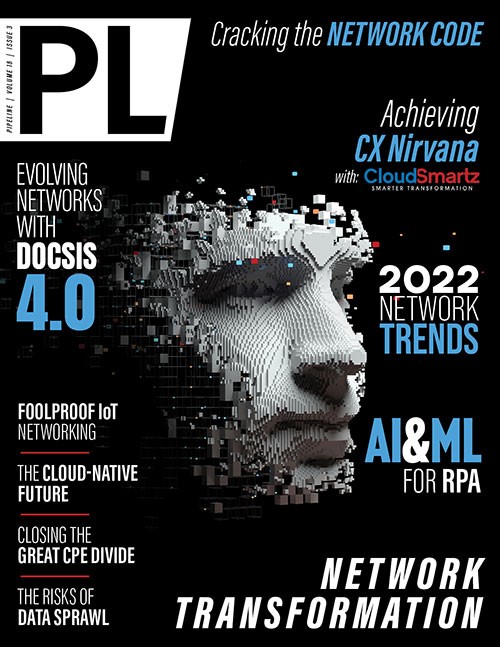AI, ML and the Next-Generation Network Reinvention
By: Shane Sura

Modern telcos have allowed themselves to build a complicated web of back-end systems designed to monitor and maintain their infrastructure. It was an age-old trap in which they believed that they could better manage these new network components by just adding another system. Instead, they just built even more complexity, limited decision-making, and made incremental work for themselves in the customer experience department.
Now, a complete shift is needed at the network operations layer to both evolve the network system architecture and modernize it while also improving monitoring and performance functions. However, it will require businesses to make bold decisions in the adoption of technologies like artificial intelligence (AI) and machine learning (ML) to get to an end state that is a fully automated workflow. But to get there we need to step back and understand how we landed here in the first place.
The current state of affairs
What operators are sitting with today is a patchwork of systems that have been stitched together creating a siloed systems environment where these systems don’t—or are unable to—communicate with one another. Each part of this quilted systems environment has been customized to address the specific need of each process flow. To streamline this sprawl, telcos adopted robotic process automation (RPA) to mimic the actions of humans and automate these previously manual processes.
To this end, RPAs and automation were used principally to reduce costs and, to a lesser extent, improve customer service. But unfortunately, we have reached the limits of these automation capabilities.
What do I mean when I say these processes have reached their limits? The systems in use today are all between five to 10 years old or older. Remember, if your system is 10 years old, your processes are probably 10 years old. This translates to them not being flexible enough to adapt to the needs of changing technologies. While to date, RPAs have been used to compensate for the fact that system stacks are not fit for purpose, they have inadvertently introduced too much complexity—making it difficult, if not near impossible, to scale and evolve.
The march to automated workflows
The end and primary goal for any network operator is to get to a point where they can rely on fully automated workflows. Sure, traditional systems were good at performing linear functions, but scale and growth unraveled this. What is now needed is a system or systems that can consume an enormous amount of unstructured but related data so that they can understand details and events and then navigate multiple pathways to resolve these events in the most effective manner.
This is exactly where AI and ML fit into the equation, as both bring intelligence to this process by providing predictive capability and insights. But before we can leverage the true automation power they will unleash, your systems need vast amounts of data, sufficient granularity, and broad systems coverage for the ML and AI to draw their insights from and build a complete picture. These requirements mean that you must think critically about the architecture required to achieve this.
Enter open architecture. With an open architecture, your tools can speak to as many systems as possible and are required to reach the appropriate and accurate insights and decisions needed. Where RPAs ran out of steam by being wholly overwhelmed, AI and ML have the capacity to consume more and more data to help better influence their actions.
Be bold – get rid of it
The only way you will get to this point of business reinvention is by ripping and replacing your systems. This will seem incredibly unpopular on the surface, until the longer-term costs of managing legacy patchworks are included in the plan. However, this step is critically required to make way for a new system stack that can deliver immediate value to your processes and automate your workflows.
Is it easy? No. But it's necessary. A business needs a minimum of three years to replace the average system, and after that, the real journey begins. It's also important to note you aren't entering a cycle of replacing systems every three years; these systems are future-proofed, and your investment should carry you for at least 10 to 15 years.
This is also why it's critical to select the right partners for the network transformation journey. In Colt’s case, we’re on the long road ahead with Ciena Blue Planet and



















